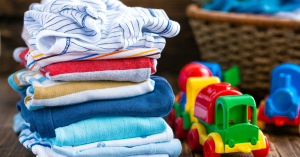Accidental burns are a significant cause of injury in children, leading to pain, scarring, and sometimes permanent damage. Each year, millions of children experience burns, often resulting from preventable accidents in the home or while playing outdoors. Understanding the common causes of burns and how to prevent them is essential for ensuring the safety and well-being of children.
Types of Burns in Children
Before delving into the causes of burns, it’s essential to understand the different types of burns children may experience:
1. Thermal Burns
These occur when the skin comes into direct contact with heat, flames, hot liquids, or surfaces. Thermal burns are the most common type of burns in children.
2. Chemical Burns
These burns occur when a child’s skin or eyes come into contact with harmful chemicals such as cleaning agents, acids, or bleach.
3. Electrical Burns
When a child comes into contact with an electrical source, either by touching a live wire or placing objects in outlets, electrical burns can occur.
4. Radiation Burns
These burns happen due to exposure to radiation, such as sunburns from excessive sunlight. Though less common, they can still lead to severe injury in certain circumstances.
Now that we understand the types of burns, let’s focus on the most common causes of accidental burns in children and how to prevent them.
Common Causes of Accidental Burns in Children
1. Hot Liquids and Scalds
One of the most common causes of burns in young children is hot liquids, such as boiling water, hot tea or coffee, or hot food. According to the American Burn Association, scalds from hot liquids account for nearly half of all burn injuries in children under the age of 4.
Children are naturally curious and may reach for hot liquids, pots on the stove, or cups of hot beverages. The high sensitivity of their skin and their inability to perceive danger can result in severe burns.
Prevention Tips:
• Always keep hot liquids out of reach of children and avoid using tablecloths or placemats that children can pull on.
• Use back burners on the stove, and turn pot handles toward the back to avoid accidental spills.
• Allow food or liquids to cool before offering them to a child.
• Consider using childproof lids or safety caps on containers that may hold hot liquids.
2. Contact with Hot Surfaces
Children are often attracted to appliances, stoves, and other hot surfaces, which can cause burns if touched. Burns from hot surfaces such as oven doors, irons, radiators, or even car engines are common, especially when children are playing or running around.
Prevention Tips:
• Always supervise children in the kitchen, especially when using the stove or oven.
• Install safety barriers or gates around stoves or hot appliances.
• Keep irons, curling irons, and other hot tools out of children’s reach when not in use.
• Encourage children to play away from areas where hot surfaces might be present.
3. Fire and Flame Burns
Open flames, whether from candles, fireplaces, or outdoor grills, are another significant source of burns for children. Fires in the home or near campfires can quickly lead to severe injuries if children get too close or accidentally knock over burning objects.
Prevention Tips:
• Keep candles, matches, lighters, and other fire-starting materials out of children’s reach.
• Install fireplace screens to prevent children from getting too close to the flames.
• Teach children about fire safety, including not playing with fire or fireworks.
• Make sure children are supervised around open flames at all times.
4. Electrical Burns
Electrical burns occur when a child comes into contact with an electrical current. This can happen if they touch an exposed electrical wire, insert an object into an outlet, or come in contact with faulty electrical appliances. Electrical burns are particularly dangerous because they may cause internal injuries, including heart problems, in addition to external burns.
Prevention Tips:
• Cover electrical outlets with safety plugs or outlet covers to prevent children from inserting objects into them.
• Ensure that electrical cords, especially those from irons or toasters, are kept out of reach.
• Teach children about the dangers of electricity and discourage them from playing with electrical appliances.
• Use appliances with safety features such as automatic shut-offs, and regularly inspect electrical appliances for signs of damage.
5. Sunburns
Although typically associated with outdoor activities, sunburns are also a common cause of burns in children. The skin of children is more sensitive to UV rays than adults, and prolonged sun exposure can result in painful burns.
Prevention Tips:
• Apply sunscreen with a high SPF (at least 30) to all exposed skin, and reapply every 2 hours, especially after swimming.
• Avoid direct sun exposure during peak hours (10 a.m. to 4 p.m.).
• Dress children in lightweight, long-sleeved clothing, hats, and sunglasses for additional protection.
• Keep children in shaded areas whenever possible.
6. Chemical Burns
Exposure to household chemicals, including cleaning agents, bleach, and pesticides, can result in chemical burns. Children are often unaware of the dangers posed by these substances and may accidentally come into contact with them, leading to painful burns.
Prevention Tips:
• Store cleaning agents, bleach, and other chemicals in locked cabinets out of children’s reach.
• Always read the labels on cleaning products for safety precautions.
• Teach children not to touch or play with household chemicals, especially when parents are not around.
• Use non-toxic, child-friendly cleaning products whenever possible.
First Aid for Burns
In case your child does experience a burn, knowing how to react quickly can make a significant difference in the severity of the injury. Here’s what to do if a burn occurs:
1. Cool the Burn: Immediately run cool (not cold) water over the burn for at least 10 minutes. If running water is not available, apply a cool compress.
2. Cover the Burn: Use a clean, non-stick bandage or cloth to cover the burn. Avoid using cotton, which can stick to the wound.
3. Avoid Ice: Never apply ice directly to a burn, as it can cause further tissue damage.
4. Pain Relief: Over-the-counter pain relievers such as ibuprofen or acetaminophen can help manage pain.
5. Seek Medical Attention: For serious burns, such as those that cover a large area, cause severe pain, or involve the face or hands, seek immediate medical attention.
Conclusion
Accidental burns in children can cause significant distress and long-lasting effects, but with proper knowledge and precautionary measures, many of these accidents can be prevented. By identifying the common causes of burns and implementing the safety tips outlined in this article, you can greatly reduce the risk of burn injuries in children.
Always remember that prevention is key; supervision, awareness, and education can go a long way in ensuring the safety of children and preventing painful accidents. Whether in the kitchen, near electrical outlets, or outdoors, taking simple precautions can protect your child from the dangers of burns and help them grow up healthy and safe.








